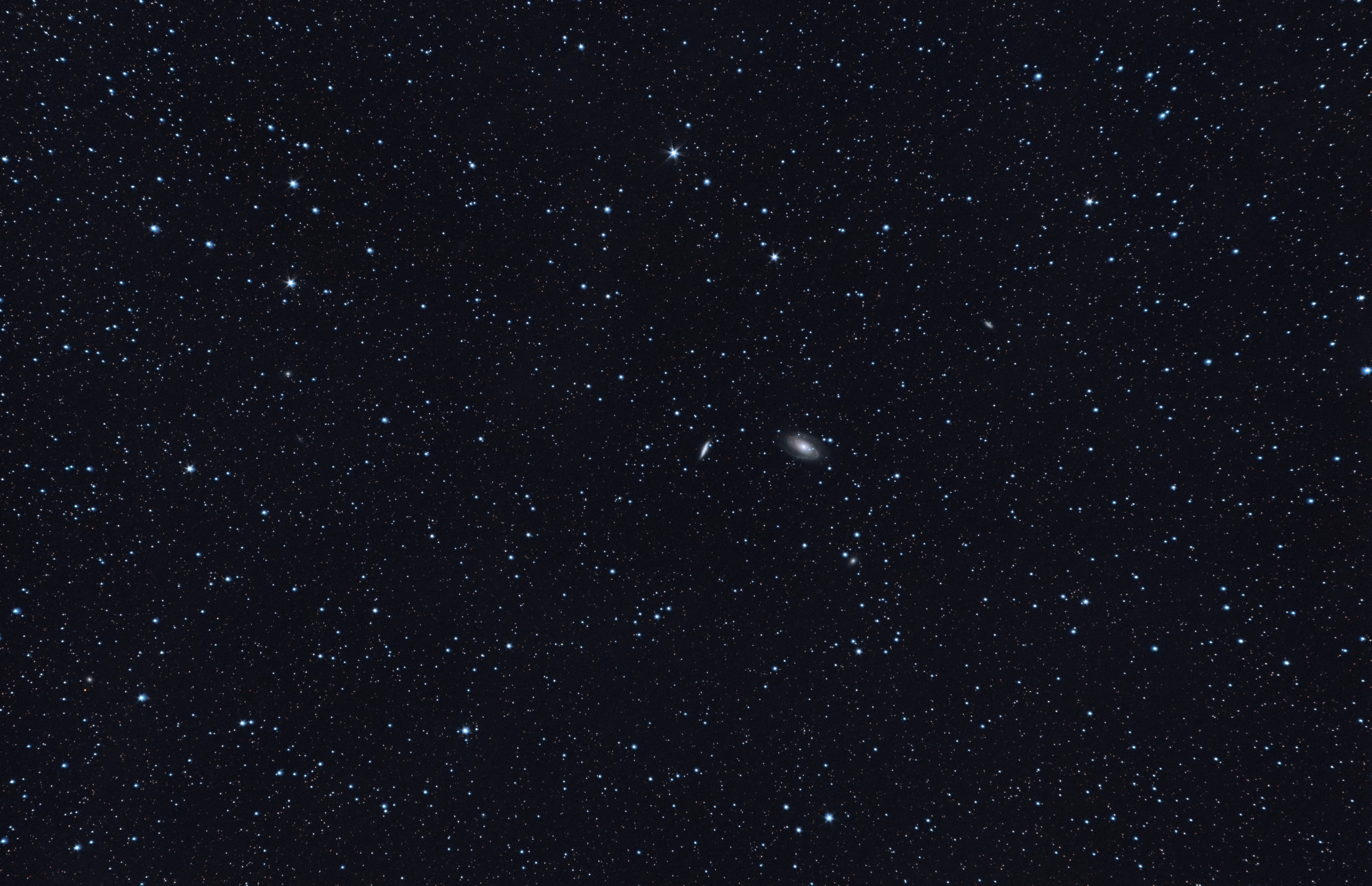The rare occasion of a clear night sky yesterday invited me to take another shot at M81 and M82 near the big dipper.
178 minutes of data with 60s sub-exposures gave me a better view than last time. Can you spot all the galaxies?
Shot with a Canon 700D
Rikenon XR 70-150mm macro lens
#astrophotography
178 minutes of data with 60s sub-exposures gave me a better view than last time. Can you spot all the galaxies?
Shot with a Canon 700D
Rikenon XR 70-150mm macro lens
#astrophotography

Comments
Bodes Galaxy (M81) itself is just a bit smaller than the milky way and its diameter in the night sky close to the full moon (~31 arc minutes)
M81 is the big one (Bode's Galaxy) and M82 is the smaller cigar galaxy.
The barely visible MCG+09-12-061 might be even further distant but I have not found any data on it.
It can also show which objects are visible, since it references my picture to the night sky.
I just copied the aesthetic manually and checked, which dots really represent galaxies, not stars.
Do you know which databases or telescopes your image is based on? There’s so much to see, and I’m wondering if this is one of the latest or not datasets— Hubble, James Webb?
Hopefully there are a couple of clear nights left before the moon gets full again.
Maybe a couple more but which might be indistinguishable from the background noise.
I of course also have a tracking mount to make longer exposures of small parts of the sky possible but it's not required for all night sky targets.
But I want to show that even with normal equipment, people can reveal details of the night sky they never knew where there and produce pretty results.